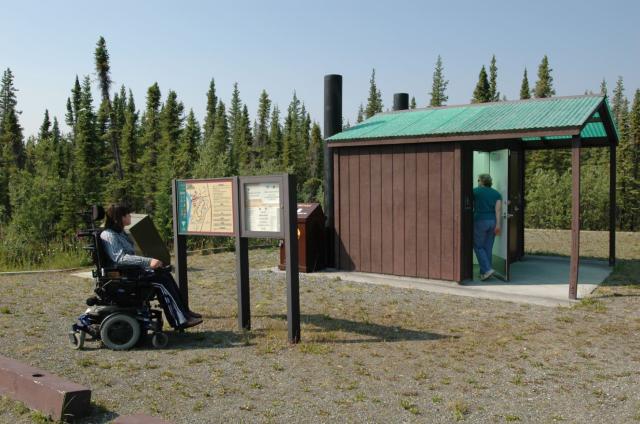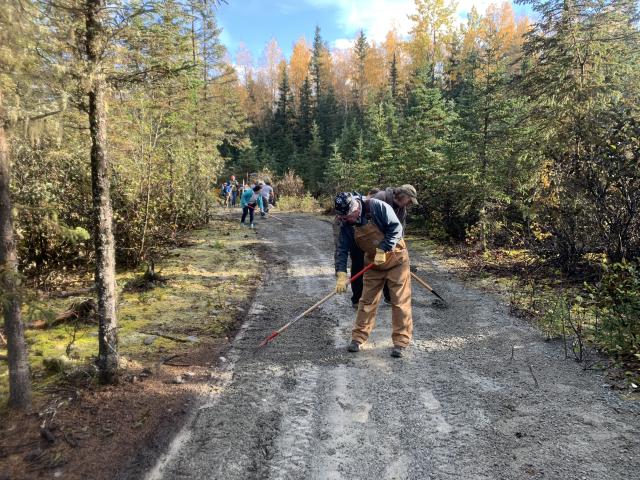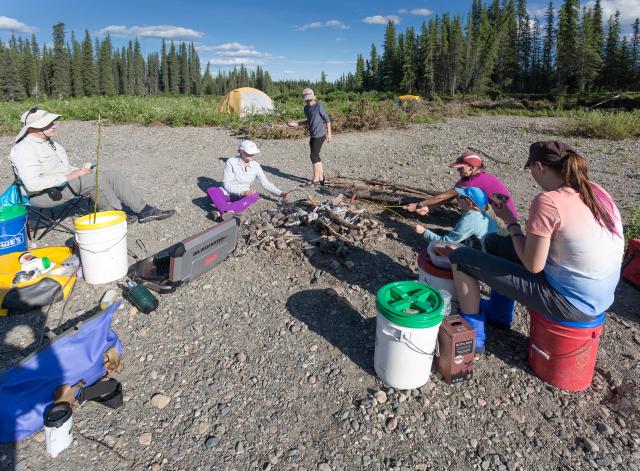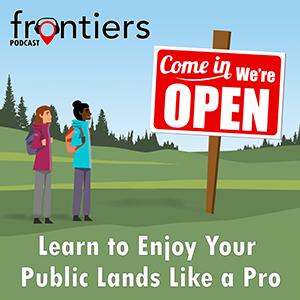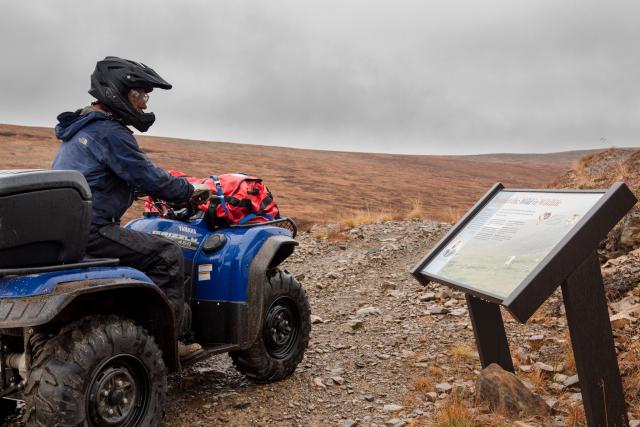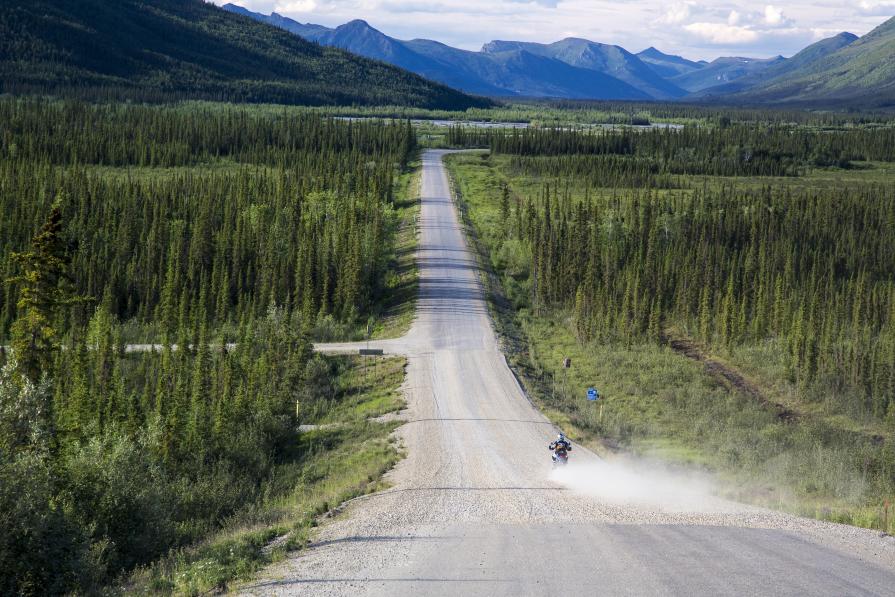
Alaska Recreation Activities
Folks in Alaska take their recreation seriously. Whether it's floating down a river fishing for salmon or dog sledding down a winter trail to a cabin, there is so much to do year round in the Great Land. Reimagine your public lands as you explore your next Alaska adventure here, and remember that respected access is open access.
Our Alaska Recreation Guide gives you an overview of recreation options across the state.
Visit BLM's interactive activity map to explore areas by activity or area of interest.
This page gives you the tools and points of contact you need to have the best experience possible. You'll find recreation guides, maps and insider information about specific activities, as well as contact information to get the latest tips and area conditions from real people at local offices. You can also try our new interactive Top Motorized Recreational Opportunities experience, download georeferenced maps, and get a link to Alaska RV dump sites to make a dump plan before even leaving home.
Your local public land managers can even make first-timers feel like pros. They know the land they care for inside and out, so we encourage you to speak with them to learn about the lands you plan to use.
Please remember that respected access is open access for public lands users. Thank you for paying your fees, using off-highway vehicles on designated trails only, and not dumping RV waste in restrooms. 100% of fees are used locally to continue providing actual land users with the amenities and services they enjoy.
Our partner TreadLightly! offers even more tips for getting the most from your land while also preserving it for future generations.
Get insider tips below about our most popular recreation activities to know before you go.
- Temporary Closures and Restriction Notices
This tab is used to post temporary closures and restrictions for BLM-managed lands in Alaska.
Orders are posted here to temporarily close or restrict the use of designated public lands, including roads, trails, and waterways, to protect persons, property, public lands, or resources; avoid conflict among public land users; or ensure the privacy of Tribal activities for traditional or cultural use. § 8364.1 Temporary closure and restriction orders
Temporary closure orders restrict public access to specific areas.
Temporary restriction orders list restrictions on public activity.
Fire Restrictions include closures or prevention orders related to wildland fire.
Fairbanks District Office
Temporary Road Closure Order - Nome Creek Road Construction, May 1 – October 31, 2025
Closed Monday through Friday for road improvements and culvert replacement to improve drainage and reduce the likelihood of spring washouts on the western part of the Nome Creek Road, which leads to Ophir Creek Campground from Nome Creek Bridge in the White Mountains National Recreation Area.
Due to soft, saturated soils during spring-break up, trails require time to sufficiently dry before off-highway motor vehicles are used on the trails. For Wickersham Creek Trail, Trail Creek Trail, 23 Mile Trail and Quartz Creek Trail the temporary motor vehicle restriction will begin May 1 and last until 12:01 a.m. on May 23 or until trails are sufficiently dry to allow off-highway vehicles use that will not cause damage to the trails,
Anchorage District Office
- No current closures or restrictions
Arctic District Office
- No current closures or restrictions
- Camping
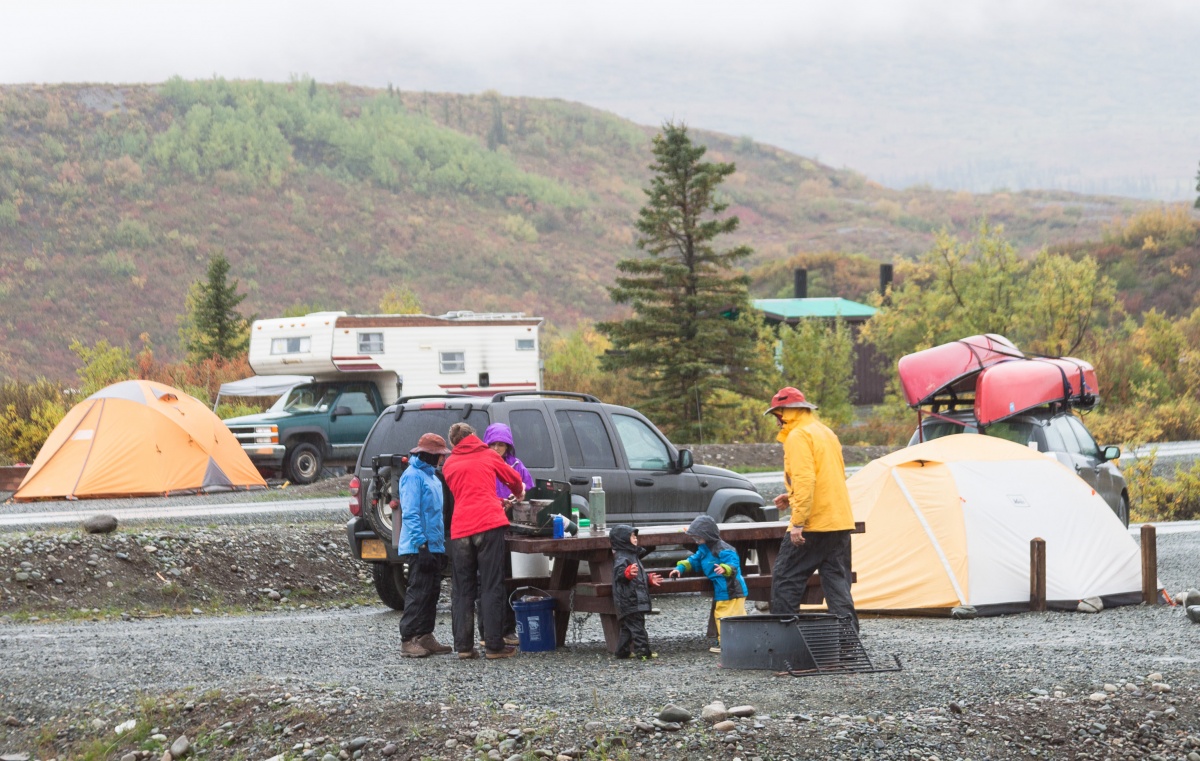
Camping in Alaska
When summer comes, most Alaskans move outdoors. Camping is a popular summer pastime for residents and visitors alike. You can camp on most BLM lands for up to 2 weeks (14 days) at a time. You cannot reserve campsites, so plan to arrive early. All camping is on a first-come, first-serve basis.
TIP: See "Public Use Cabins" below for more options
Our campgrounds have the facilities that recreationists have come to expect. However, features are not the same in each location. Here are a few guidelines:
Expect: Picnic tables, Fire pits, Litter barrels, Vault toilets Don't Expect: Showers, Washers/dryers, Hot water, RV dumping stations Please bring your own firewood.
TIP: Dumping RV septic and waste in restrooms makes everyone's visit a stinker, and we only have 1 dump station on all BLM-managed public lands in Alaska. Find the nearest place to lighten your load and make a dump plan before even leaving home to recreate responsibly.
#TreadLightly | #BackyardtoBackcountry | #DumpPlan
- Treat all streams, lakes, and ponds as if they contain Giardia, a parasite that produces nausea, severe stomach cramps, and diarrhea. Always boil or chemically treat water from streams or lakes before drinking.
- Plan your travel so that you can stop at one of the communities along the road system for services not provided.
- Public Use Cabins
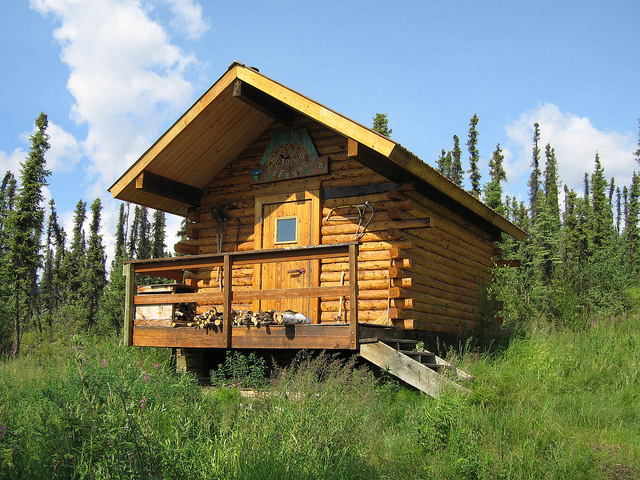
Public Use Cabins & Trail Shelters
BLM Alaska manages several public use cabins throughout Alaska. Few are located near roads, and most are accessible only during the winter. Some cabins are available on a "first-come, first-served" basis, while others need to be reserved in advance.
TIP: Check out the reservable hidden gem Fred Blixt Cabin with year-round road access about 2 hours north of Fairbanks.
Most cabins are rustic with primitive amenities, like wood heating stoves, propane cookstoves and lanterns, and pit outhouses. Visitors need to be prepared to "rough it."
- 5 first-come, first-served shelter cabins along the Iditarod National Historic Trail
- 13 reservable public use cabins in the White Mountains National Recreation Area
- Multiple free first-come first-serve trail shelters along the Pinnell Mountain National Recreation Trail.
The following guides provide more details to use in planning your next adventure.
- Iditarod National Historic Trail Visitor Guide
- Iditarod National Historic Trail Map and Guide
- Iditarod National Historic Trail Interactive Map
- White Mountains National Recreation Area Brochure
- White Mountains National Recreation Area Georeferenced PDF Map
- Reserve a White Mountains National Recreation Area Cabin from Recreation.gov
Contact the Anchorage Field Office or the Fairbanks District Office for more information about Public Use Cabins, as well as current area and trail conditions
- Off-highway Vehicles
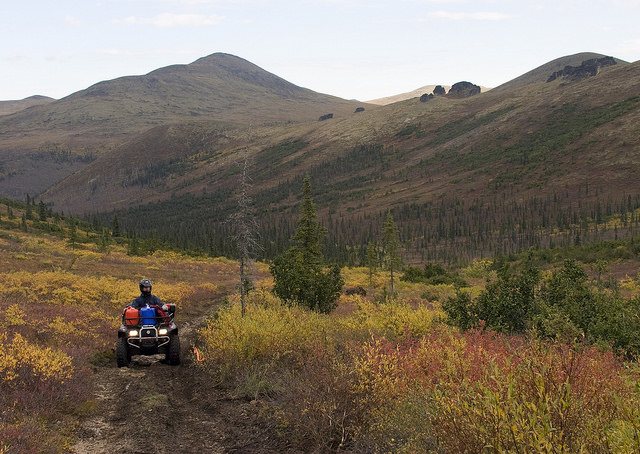
Off-Highway Vehicles
Most of your public lands managed BLM Alaska are remote with little or no road access, but off-highway vehicles (OHVs) like ATVs and snowmachines provide more access than ever.
However, there are some limits to protect resources and wetlands from damage, so please contact a local BLM office about where to ride if ever in doubt. Contact information is at the bottom right of this web page.
We’ve got details below about specific areas to ride, but these quick off-roading tools will come in handy:
- Off-highway Vehicles on Public Lands web page
- Interactive map experience | Top BLM Motorized Recreational Opportunities
- Georeferenced PDF maps
Here are a few areas that allow for summer OHV activities on designated trails
White Mountains National Recreation Area and neighboring Steese National Conservation Area
Numerous and diverse opportunities for summer recreation exist on BLM-managed public lands in the Steese and White Mountains travel management areas. A typical summer season runs May 1 through October 14, but the transition into and out of winter is variable, so sometimes modifications are announced.
New Travel and Transportation Management Plans, completed in October 2022, outline the BLM designations for routes and cross-country travel areas where off-road travel is allowed. Some designations include vehicle curb weight and width limitations. A vehicle’s curb weight is the total weight of the vehicle unloaded with a full tank of fuel and all fluids. BLM designations with OHV limitations are depicted on updated BLM maps and on local signage.
Please be aware that large OHVs, ARGOS, and four-door side-by-side UTVs are too large for use on most routes and cross-country travel on these BLM-managed lands. In the White Mountains National Recreation Area and Steese National Conservation Area, motorized vehicles over 1,500 pounds curb weight or over 64 inches wide may only be ridden on roads and within designated areas found in the Nome Creek tailings.
In the White Mountains National Recreation Area motor vehicles with a curb weight of 1,000 lbs. or less and a width of 50 inches or less can be operated on most of the lands within the National Recreation Area, except where there are summer non-motorized use limitations to protect sensitive resources. Portions of the Wickersham Creek Trail, the Beaver Creek National Wild and Scenic River corridor, and the lands northeast of the corridor are closed to summer use of motorized vehicles. There are also three Research Natural Areas and several hiking trails that are closed year-round to motorized use. Cross-country, off-road travel in the Nome Creek Valley is now limited to designated areas in the Nome Creek Tailings.
In the Steese National Conservation Area, the Harrison Creek – Portage Creek Road and Fryingpan Creek Road are open to all modes of motorized travel, but are unmaintained and offer adventurous opportunities for all kinds of high-clearance, four-wheel-drive vehicles, or off-highway vehicles. The new Travel Management Plan changed summer access in the National Conservation Area by requiring motor vehicles to remain on routes designated for their use , thereby no longer allowing cross-country motorized travel in much of the National Conservation Area. The new designated summer route network was selected from the user-made routes that developed when the area was open to summer cross-country travel. Many of these newly designated routes may be in poor condition and can be challenging to locate. We appreciate your patience as we work on route improvements and signage. Some pre- existing routes are not part of the designated route network and are not open to motor vehicles in the summer. Three cross-country travel areas for OHVs 1,000 pounds or less curb weight and a maximum width of 50 inches are in the south Steese unit. Larger vehicles must stay on roads and routes designated for their use.
Three cross-country travel areas for OHVs 1,000 pounds or less curb weight and a maximum width of 50 inches are in the south Steese unit. Larger vehicles must stay on roads and routes designated for their use.
Contact The Eastern Interior Field Office for more information on the use of OHVs in the White Mountains National Recreation Area.
Free Georeferenced PDF Map:
Steese National Conservation Area
Tangle Lakes Archaeological District
Between mid-May and mid-October, use of motorized vehicles are limited to the designated trails only within the Tangle Lakes Archaeological District located on the Denali Highway. Contact the Glennallen Field office for more information or pick up or download the Tangle Lakes Archaeological District Brochure.
Richardson and Edgerton Highways
There are also trails and areas along the Richardson Highway. Pick up or Down load the Trails and Easements for the Richardson and Edgerton Highways Brochure.
Please respect private property rights when using 17b easements to cross Alaska Native owned lands. Stay on the easements and remember that you can not hunt or fish on Alaska Native lands without permission.
Keep in mind that you are responsible for knowing, understanding, and complying with all OHV regulations. Please obey all signs regarding the management of public lands and routes.
When riding the trails, please follow a few simple guidelines:
Wear a helmet Stay on the trail to reduce damage to the surrounding area and resources.
#BLMAlaskaOffRoad
- Share the trail with other trail users by respecting other types of use and modes of travel, such as hikers and mountain bikers.
- Respect private property by staying on the trail easement when crossing private lands.
- Hunting
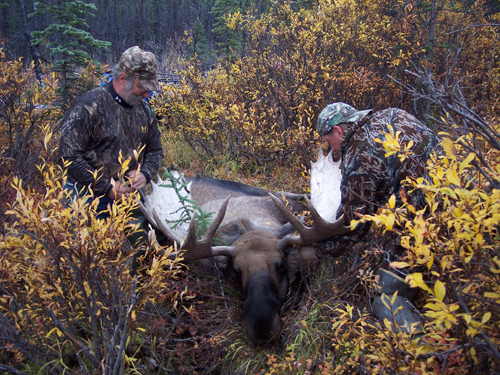
Hunting in Alaska
Alaska provides numerous hunting possibilities found in few other locations in the world. It is true that we have huge moose, and vast caribou herds dominate the landscape in some areas and seasons. Numerous mountain ranges support populations of Dall sheep and mountain goats, and Sitka black-tailed deer thrive in the coastal forests. Musk ox, bear, and wolves are also big game possibilities. If bird hunting is more to your liking, we have that too.
- BLM-managed public lands are generally open (unless specifically closed) to hunting under State of Alaska Fish and Game laws. All hunters need an Alaska hunting license to hunt within the State of Alaska, and your local BLM Alaska offices welcome your calls for details about hunting on your public lands.
- Alaska also has subsistence hunting which is managed on Federal lands by the Federal Subsistence Management Program. Learn more about subsistence hunting and specific hunts on our Subsistence web page.
- Fishing
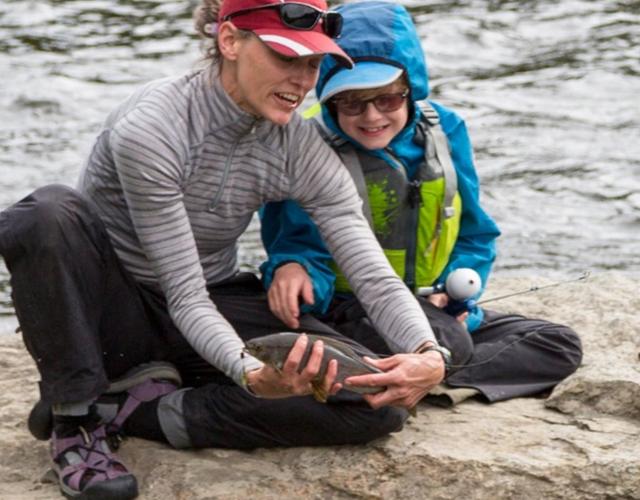
Fishing
Alaska manages over 100,000 miles of stream and 2.5 million acres of lakes located on public land. These waters are becoming increasingly important to recreational, commercial, and subsistence anglers. The waters host many fish species vital for healthy ecosystems. The BLM’s goal is to conserve fish populations and habitat for current and future generations while allowing continued public use and enjoyment of this resource. Please help by respecting the access we all enjoy.
Many fish species inhabiting BLM-managed waters are highly valued by anglers. While Chinook, coho, and sockeye salmon are favorites because of their size, fighting ability, flavor, and beauty; rainbow trout, lake trout, Arctic char, northern pike, Dolly Varden, and Arctic grayling also provide many hours of fishing pleasure.
Sport fishing is regulated by the State of Alaska. Anyone older than 16 will need to obtain an Alaska fishing license to sport fish in Alaska waters. You can get more information by visiting the Alaska Department of Fish and Game website or contacting them for a copy of the current Alaska Sport Fishing regulations.
- River Floating
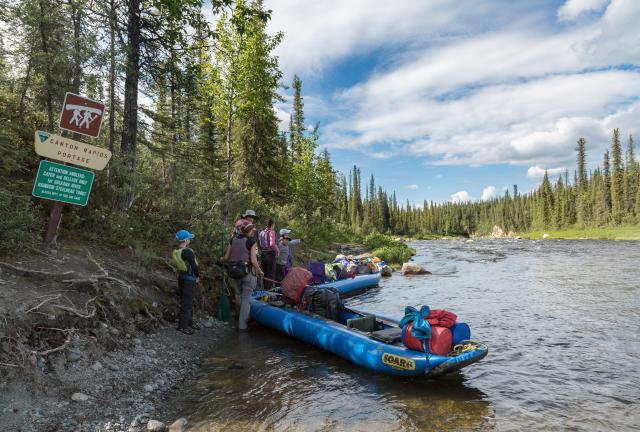
River Floating
Clear, pristine waters and unparalleled scenery make Alaskan waters some of the best boating, rafting, kayaking, and canoeing adventures you can find.
BLM manages six Wild and Scenic Rivers in Alaska for the public that provide access to a world of outdoor adventure. Whether you want a calm Class I river float or the exciting Class III whitewater rapids adventure; to go for a single day or on one of the longest road-to-road floats in North America; or something in between, there is a river for you!
- Birch Creek National Wild River
- Beaver Creek National Wild River
- Delta National Wild and Scenic River
- Fortymile National Wild and Scenic River
- Gulkana National Wild River
- Unalakleet National Wild River
TIP: Travel back in time as you experience hidden gem Steele Creek in heart of Alaska's Fortymile region.
Realize that drowning is the second leading cause of accidental death in Alaska. Please wear your life jacket and remember that Alaska waters are very cold. If you fall in, be aware of the signs of hypothermia and be prepared for emergencies.
Most drownings are due to capsizing or falling overboard into cold water when the boater is not wearing a life jacket. Most casualties have not taken a single boating safety course.
- Driving Tours
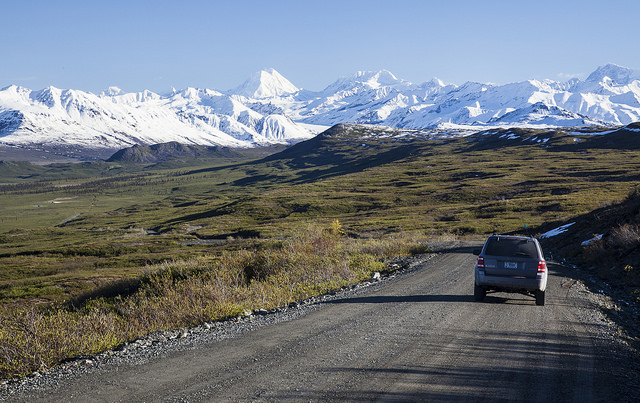
Alaska Scenic Driving Tours
Unexpected wildlife sightings, epic scenery and the opportunity to see new country make driving in Alaska a rewarding adventure. Be sure to grab a copy of the Watchable Wildlife brochure for your trip. The best time to take a scenic drive is May-October when temperatures are warmer and driving conditions are generally favorable.
BLM Alaska manages several campgrounds accessible from Alaska's scenic highways. You can find highway brochures at BLM field offices. There’s also a link to those not listed below in the Resources section at the top right of this web page.
Alaska has about 15,000 miles of roads, but fewer than 5,000 miles are paved. Be prepared when driving Alaska's highways and backcountry roads. Make sure you have a spare tire and a map, and check with BLM offices, Department of Transportation, or Alaska State Troopers along the way for road closures.
- Hiking
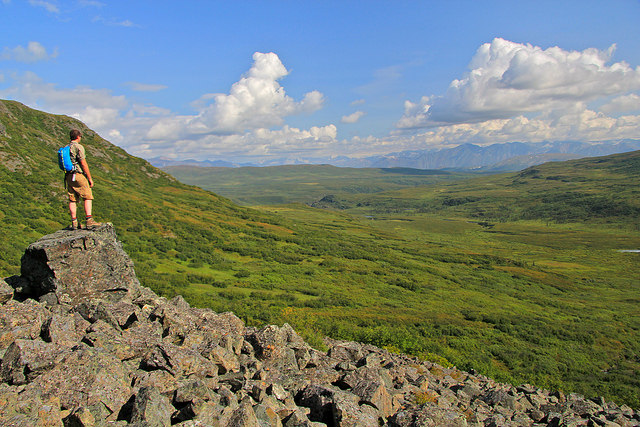
Hiking
Trails provide access to your public lands for lots of activities, including bird and wildlife watching, hiking, biking, horseback riding, skiing and dog mushing.
While most motorized trails allow multiple-use recreational activities, some BLM trails are managed for hikers and other non-motorized trail users who like to get away from it all.
- The 730-acre Campbell Tract offers an extensive non-motorized trail system in Anchorage that is used year-round by bikers, hikers, equestrians, and skiers.
- The 27-mile Pinnell Mountain National Recreation Trail begins along the Steese Highway and traverses a ridgeline between Twelvemile Summit and Eagle Summit. This non-motorized trail offers views stretching from the Alaska Range to the Yukon Flats.
- The one-million-acre White Mountains National Recreation Area, north of Fairbanks, offers several non-motorized trails such as the 20-mile Summit Trail, the 5-mile Ski Loop Trail, and the 3-mile Table Top Mountain Trail. In winter, this area has over 200 miles of multiple-use trails, including 12 public use cabins available by permit.
- Along the Denali Highway there are numerous hiking opportunities, such as the Swede Mt. Trail, Tangle Lakes foot trails, and the Osar Lake Trail, which is a multiple-use trail that is generally dry and suitable for hiking. Additionally, the open expanse of the Denali Highway area allows users to explore their own routes within sight of the highway itself.
- The Edgerton Highway has two 17(b) easements that provide rewarding hiking experiences. The Tonsina River 17(b) easement (2 miles long) provides foot access to the lower Tonsina River. The Liberty Falls easement offers excellent but fairly steep hiking. It travels about one mile and provides excellent views of the Wrangell Mountains and the Copper River.
- The south Richardson Highway offers a combination of 17(b) easements and hiking trails: Poplar Grove, Mile 141, June Lake, Gillespie Lake, and Fish Creek.
- Mountain Biking
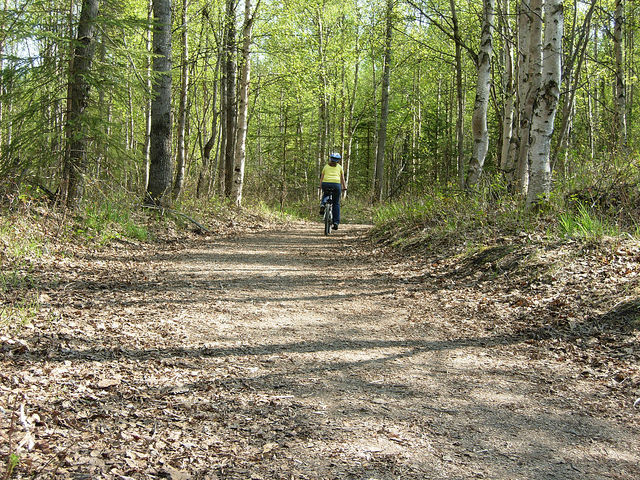
Mountain Biking
Many of our trails are multi-use and therefore opportunities for mountain biking are numerous!
White Mountains National Recreation Area
The White Mountains National Recreation Area allows mountain biking along its trails, but be prepared for a challenge.
Campbell Tract
The Campbell Tract in Anchorage has 12 miles of outdoor recreation trails, and most are open to biking. Campbell Tract is a very easy introduction to riding in Anchorage. With a mix of relatively flat singletrack and doubletrack, it's also very family and beginner friendly. There are several trails that make logical loops of any distance. Some of these popular trails connect to other trails managed by Anchorage Parks and Recreation.
Tangle Lakes Archaeological District
There are several designated trails with the Tangle Lakes Archaeological District that the BLM and the State of Alaska manage that are open to summer mountain biking. Trail access is via several mile posts along the Denali Highway. Contact the Glennallen Field office for more information.
- Horseback Riding
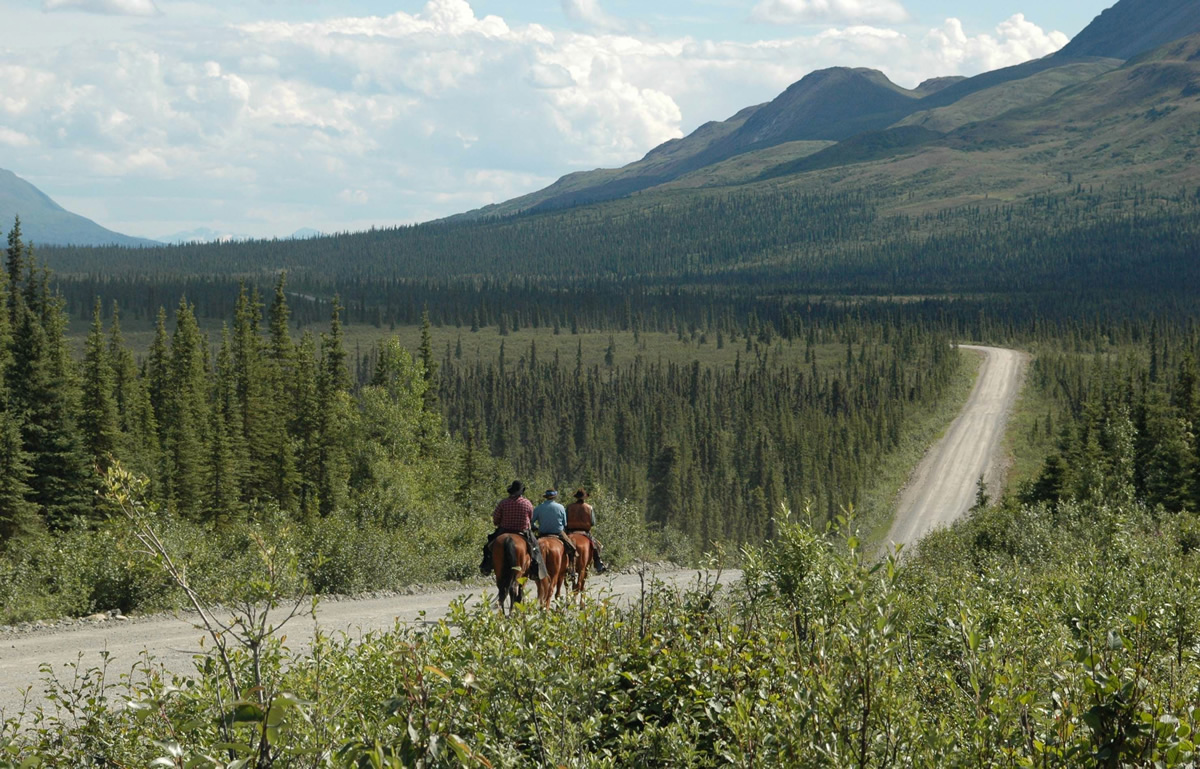
Riding Horses in Alaska
What better way to see the Last Frontier than from the back of a horse, just like in the old days! Horseback riding is allowed on several trails managed by BLM Alaska.
For horseback riding information in the Glennallen area, please contact the Glennallen Field Office for specific trails and rules.
In the Anchorage area, the BLM Campbell Tract offers several trails for horseback riding. For trail maps and information, contact the Anchorage Field Office.
The White Mountains National Recreation Area is a great place for scenic horseback rides. To learn more, visit the White Mountains National Recreation Area website or contact the Fairbanks District Office.
- Gold Panning
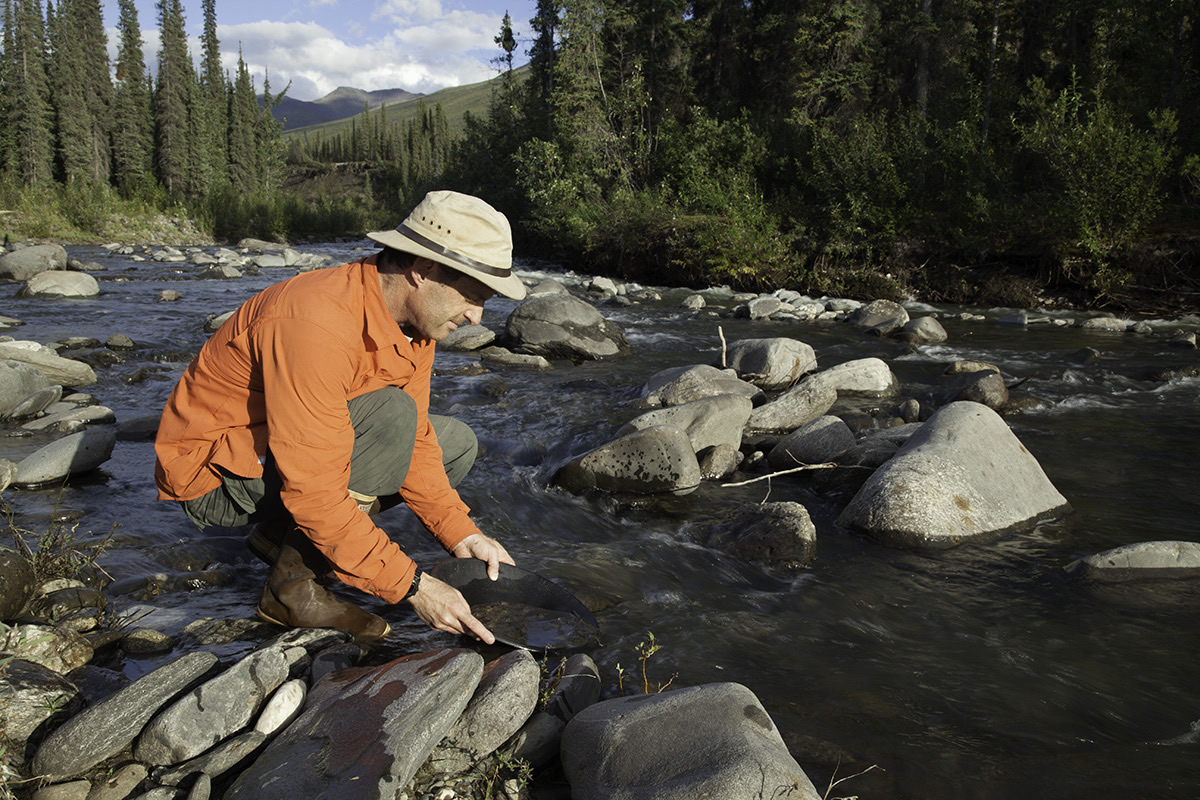
Recreational Gold Panning and Rockhounding
There is still gold in them thar hills! The lure of gold is what brought the miners to Alaska over 100 years ago and is still attracting folks searching for that elusive nugget today. Gold panning and prospecting, if not lucrative can be a fun outdoor entertainment for almost every age.
TIP: Learn with our new How to Pan for Gold video.
As you drive through Alaska, you may notice many signs of past mining activities - tailing piles, abandoned dredges and equipment, scars from hydraulic mining, and old mining camps. Even simple hand tools can scar and destroy resources. Before you take your pan in hand, consider the impacts recreational gold panning can have:
- Sluicing gravels can cause silt to wash into the streams and destroy fish spawning beds. Use back eddies and side pools to reduce the amount of dirt and silt entering the main stream channel.
- Do not dig into or near bridge abutments.
- Work only in the stream channels or on unvegetated gravel bars to protect bank stability and prevent erosion.
- Know who the landowner is when you plan your gold panning activity.
Prospecting on BLM managed lands is limited to hand tools and light equipment, such as gold pans, rocker boxes, sluice boxes, or picks and shovels. Use of motorized equipment, such as backhoes, bulldozers, and suction dredges, are not allowed without a permit. It is important that you know who the landowner is when you plan your gold panning activity. For more information on mining visit the BLM-Alaska Mining home page.
Northern Alaska
Panning is allowed on any federal stream segment along the Dalton Highway south of Atigun Pass (MP 244), with the following exceptions: no panning in the pipeline right-of-way (27 feet or 8.2 m on either side of the pipeline) and no panning on federal mining claims without permission.
Interior Alaska
The Nome Creek Valley offers a four-mile area set aside for recreational gold panning. The Nome Creek valley turnoff is at milepost 57 on the Steese Highway, northeast of Fairbanks. There is also a public gold-panning area on Jack Wade Creek from one quarter mile(.4km) upstream of the Walker Fork Campground to the mining claims near mile post 85. Panning is not allowed on adjacent mining claims.
South Central Alaska
There are many areas available for recreational gold panning just outside of Anchorage on the beautiful scenic Kenai Peninsula.
You can also visit the State of Alaska’s guide to Alaska gold panning and placer mining resources
- Winter Biking
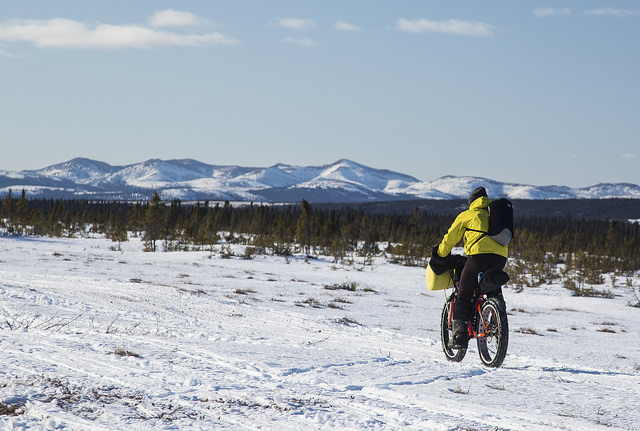
Winter (Fat Tire) Biking
With the invention of studded bike tires and the ever popular 'fat tire' bikes, winter biking is a growing recreation activity in Alaska. BLM has hundreds of miles of trails you can get outdoors in the winter and have fun on!
White Mountains National Recreation Area
With over 240 miles (386 km) of groomed trails, winter biking in the White Mountains NRA is limited only by your skill level, fitness and at times your gear. It also has 2 shelter cabins and 12 public use cabins you can reserve to create a multi-day trip. The White Mountains NRA is also host to an annual 100 mile winter bike race held in March.
- White Mountains National Recreation Area brochure
- White Mountains National Recreation Area Georeferenced PDF Map
Campbell Tract
The Campbell Tract in Anchorage has nearly 20 miles of groomed trails in the winter, and most are open to winter biking. There are a few trails that are only for dog sledding, look for the signs. Some of these popular trails connect to other trails managed by Anchorage Parks and Recreation. Dog teams move fast, silently, and cannot stop quickly, so please look and listen carefully near mushing trail intersections.
Iditarod National Historic Trail
If you want rustic adventure and a challenge, then biking the Iditarod Trail in the winter fits the bill. Over 1,500 miles of the historic winter trail system are open today for public use across state and federal lands. There are several public shelter cabins along the trail for you to plan you winter trip accordingly. The Iditarod National Historic Trail is also host to an annual 1000 mile and 350 mile winter ultra marathon (includes a winter biking category) held in February.
- Dog Sledding
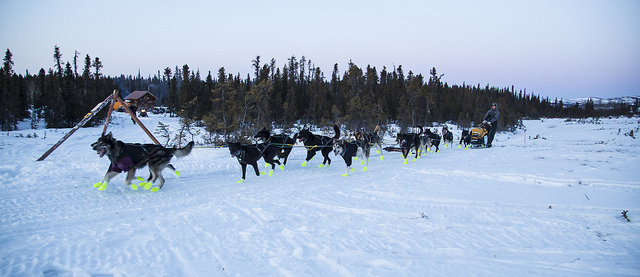
Dog Sledding (mushing)
Dog mushing is the traditional Alaska winter transportation. With the advent of the Iditarod Sled Dog Race and other sled dog races, dogsledding has become a popular activity throughout Alaska. Dogsledding, the practice of a musher guiding a team of dogs pulling a sled over ice and snow, can serve many purposes. Whether it’s a casual run along public recreational trails, racing against competitors, or hauling supplies, public lands have much to offer.
In Anchorage, the BLM’s Campbell Tract has more than 12 miles of multi-use trails available to dogsledding.
The residents of Fairbanks must travel about an hour to reach public land in the White Mountain National Recreation Area, which boasts more than 200 miles of groomed trails. Take a break and stay at any of the 12 public use cabins while mushing in the recreation area, but first make reservations and acquire a permit by calling 907-474-2200.
- White Mountains National Recreation Area Brochure
- White Mountains National Recreation Area Georeferenced PDF Map
If you want to get a taste of history the dog sledding on Iditarod National Historic Trail is quite the experience. Over 1,500 miles of the historic winter trail system are open today for public use across state and federal lands and the trails go from Seward all the way to Nome. There are several public shelter cabins along the trail for you to plan you winter trip accordingly. The Iditarod National Historic Trail is also host to the annual long-distance Iditarod Sled Dog Race and several smaller races.
When looking to dogsled in the Glennallen area, it is best to call BLM’s Glennallen Field Office at 907-822-3217 for directions for trails and conditions.
Dog sleds are allowed on most trails unless posted closed to dog sled use. Trail closures are usually for safety reasons, such as open water, or to protect the trail base for another activity such as skiing.
- Cross-country Skiing
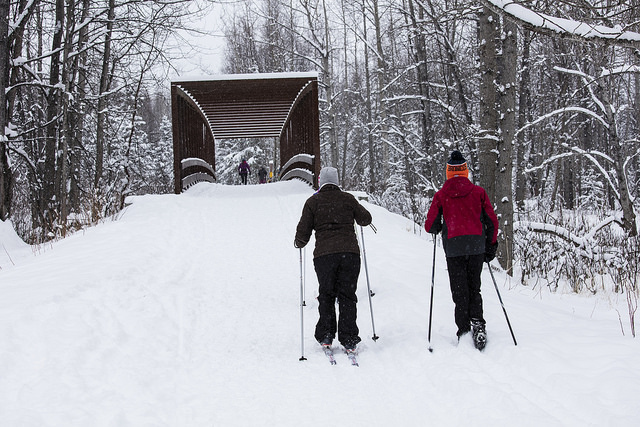
Cross-country Skiing
Alaska is known for its long, beautiful winters and excellent opportunities for skiing enthusiasts. While most BLM-managed trails allow motorized activities, some trails are managed for non-motorized activities including skiing and ski-joring.
The BLM Campbell Tract in Anchorage offers groomed non-motorized cross-country ski trails. Each winter the popular Tour of Anchorage cross country ski marathon crosses the Campbell Tract trail system to connect seamlessly with Municipality of Anchorage ski trails.
Campbell Tract Trails Map Brochure
The White Mountains National Recreation Area offers the groomed, non-motorized 5-mile Ski Loop Trail. The White Mountains area includes almost one million acres of public lands with more than 200 miles of multiple use trails for winter enthusiasts to explore.
- Ice Fishing
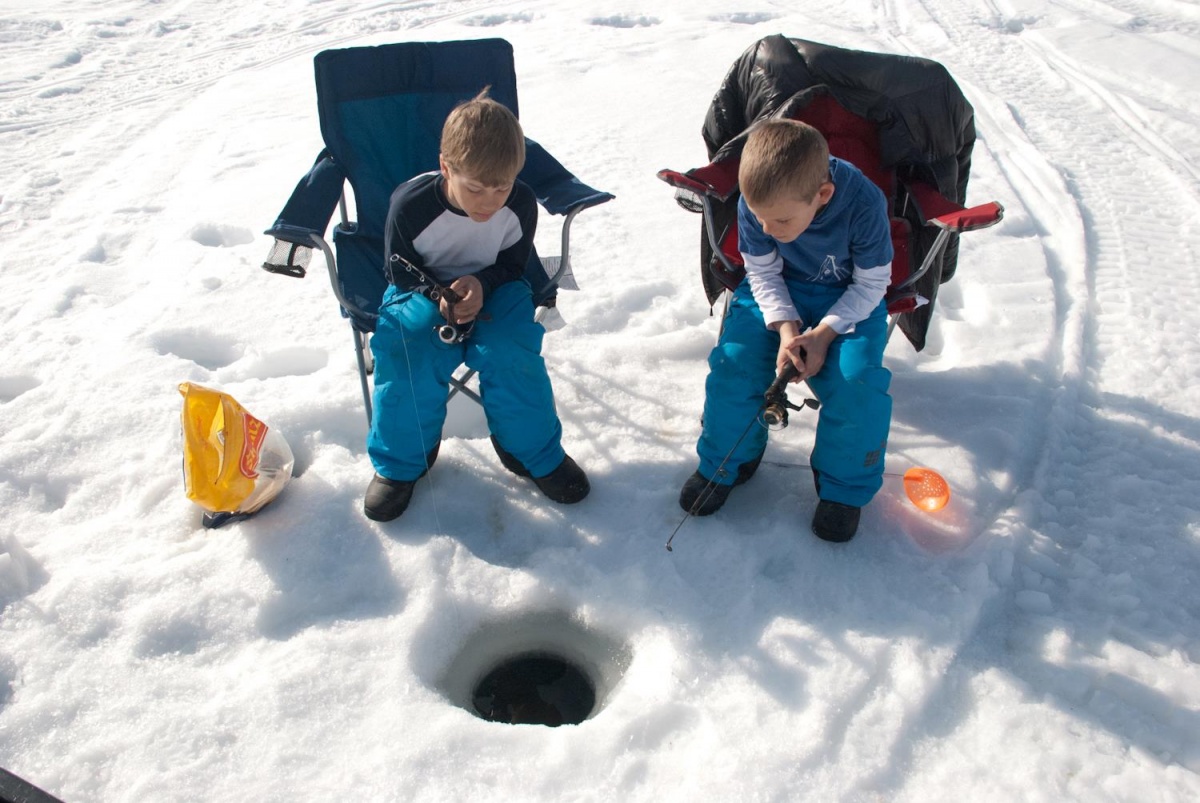
Ice Fishing
Just because the lakes and rivers freeze doesn’t mean you have to stop fishing. The best time for ice fishing is right after freezeup while the fish are still active. Once the ice builds to a safe thickness, anglers seek Dolly Varden, burbot, char, coho salmon, sheefish, whitefish and trout.
Before you take the whole family ice fishing, drill a test hole in the ice to check the thickness; 6 inches is a recommended minimum. Watch for overflows and be alert for rotting ice as the spring thaw progresses.
Take with you an auger or ice chisel, an ice skimmer, a tarp (for a windscreen), a heat source, and a safety rope. Also take extra clothes, boots and gloves.
The leading cause of death in Alaska is cold water near drowning. Know all you can about cold water safety and the signs of hypothermia before you fish. Learn the factors for survival.
Regulations require that you register with the Alaska Department of Fish and Game if you intend to leave a shelter standing on the ice overnight in the Tanana River drainage. Anglers need a current fishing license in their possession. Other regulations apply.
- Snowmobiling (Snow Machining)
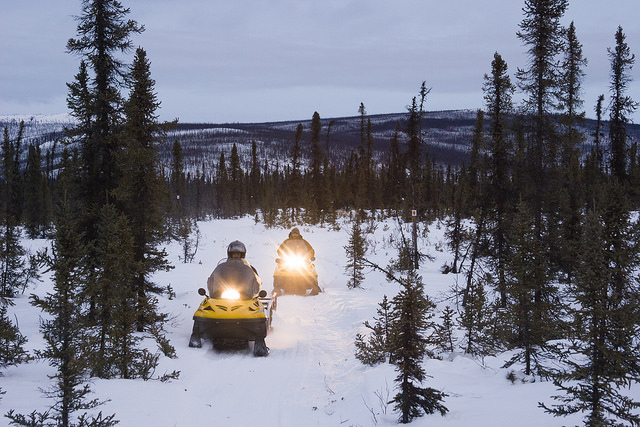
Snowmobiling (Snowmachining)
While there is a lot of country in Alaska, there are a few areas that stand out for their winter trail systems and attractions.
The White Mountains National Recreation Area maintains over 200 miles of multiple-use winter trails, connecting 12 public use cabins.
- White Mountains National Recreation Area Brochure
- White Mountains National Recreation Area Georeferenced PDF Map
The Iditarod National Historic Trail is over 1,000 miles long and connects Seward to Nome.
There are numerous snowmachine opportunities within the Glennallen area. Trails are not maintained, and users will experience highly variable conditions. A popular area for this activity is the Denali Highway. Within the Tangle Lakes Archaeological District off trail motorized use is allowed between October 15 and May 16 if 6" of ground frost or 12" of snow cover is present. Contact the Glennallen Field office for more information.
Multiple-Use Trails
In the winter, most of the trails in Alaska are considered “multiple use”. That means trail users need to share the trail with several types of use such as skiers, dog mushers, snowmobilers, and hikers. Please respect other trail users and demonstrate the Alaska Spirit of Sharing the Trail.
Trail Etiquette
- When meeting head-on, snowmobilers should pull off the trail and turn off their engines to allow other non-motorized users to pass.
- When approaching from behind, snowmobilers should slow down and wait until the traveler in front signals it's OK to pass.
- Slower riders should pull off the trail to allow faster riders to pass.
- Do not disturb trapping activities in the area.
- Do not camp on the trail. Camp at least 25 feet away from the trail.
- Operation of motorized vehicles, including snowmobiles, under the influence of drugs or alcohol is prohibited.
- Please remember to wear your helmet.
Thank you
for Paying Fees
100% of fees paid here stay here! Fees are used for maintenance, repairs, enhanced recreation facilities, and keeping you safe when visiting your public lands. This includes 92 recreation sites, 13 public-use cabins and 16 developed campgrounds in Alaska.
If you have questions or suggestions, please let us know. You can also read about our guidelines for building attractive, functional, and sustainable facilities.
In the meantime, enjoy, and thanks in advance!
#PaidMyFee
Volunteer Adventures
From campground hosts to community scientists, volunteers help keep us connected to the communities we serve. Their contributions are critical to many BLM Alaska areas, including recreation, cultural and historical resources, biological and ecological programs, and environmental education.
We're accepting applications -- and questions -- to help you find the Alaska volunteer adventure that's right for you | APPLY or ASK
#TeamPublicLands | #ConnectedtoCommunities

